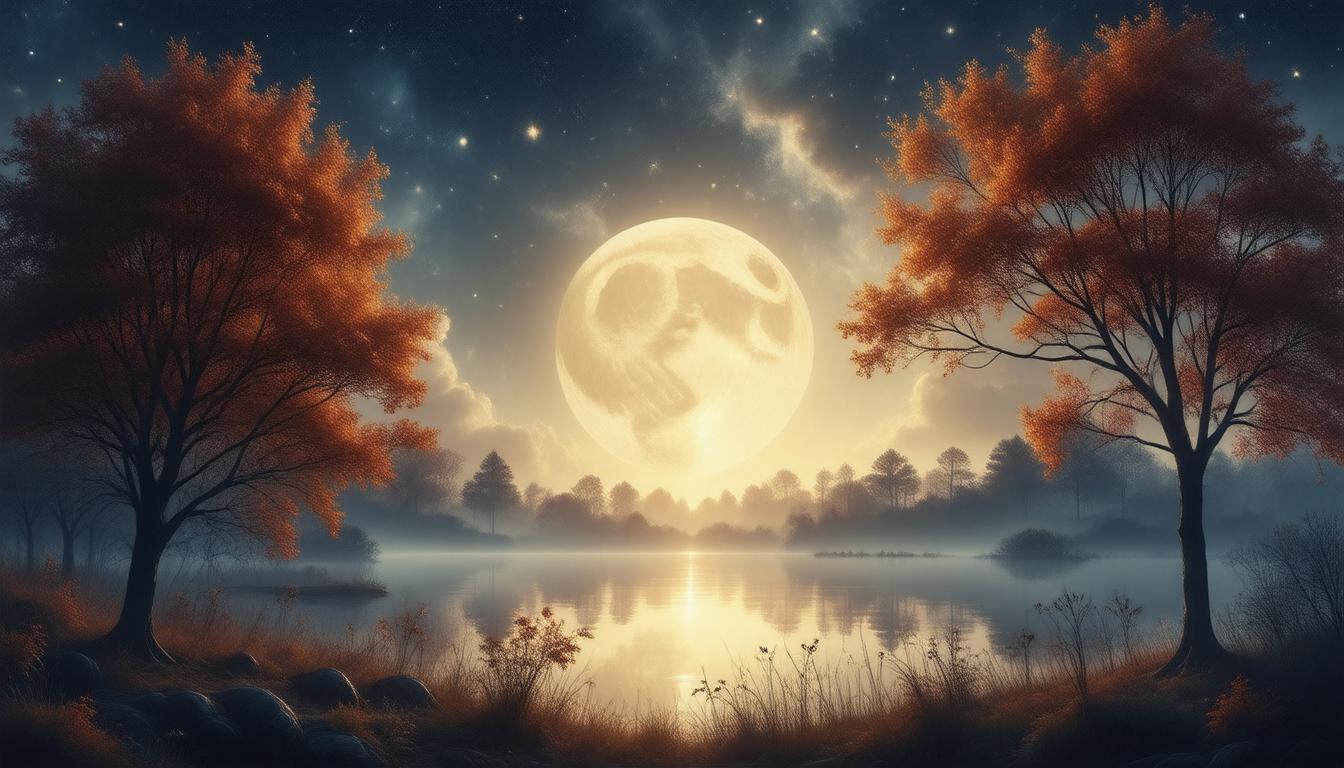🌟 Daily Awakening Quiz 🌟
The October full moon holds a unique place in the celestial calendar, as its names reflect both the seasonal changes and the rich traditions of various cultures. From the "Hunter’s Moon" to the "Harvest Moon," the names given to October’s full moon tell stories of nature, sustenance, and ancestral practices.
The Most Common Names: Hunter’s Moon and Harvest Moon
The term "Hunter’s Moon" is the most widely recognized name for the October full moon in the Northern Hemisphere. This designation dates back to the early 1700s, when it was commonly noted that mid- to late autumn is the peak time for hunting game animals. As leaves fall and visibility increases, hunters would find it easier to track and hunt deer, turkey, and other game during the cooler months.
Interestingly, when the October full moon occurs early in the month and is the closest full moon to the September equinox, it is referred to as the "Harvest Moon." This name honors the tradition of gathering late-season crops and preparing for winter, a practice that resonates across agricultural communities. Native American tribes, such as the Creek and Apache, have specific names for this time, like the "Big Chestnut Moon" and "Moon When Corn Is Taken In," emphasizing the importance of food preservation during this period.
Regional Variations and Cultural Significance
Native American tribes each have their interpretations of the October full moon, often reflecting local environmental changes. For instance, the Ojibwe people call it the "Falling Leaves Moon," while the Lakota refer to it as the "Moon When The Wind Shakes Off Leaves." These names highlight the significant transformations in nature, marking a transition from the vibrant colors of autumn to the subdued tones of winter.
Other tribes mark the onset of colder temperatures with names such as the "Moon of the First Frost," which the Potawatomi use, and the "Freeze Begins on Stream’s Edge," noted by the Cheyenne. These names convey the practical implications of seasonal change, reminding communities of the need to adapt to the challenges of their environment.
Connecting with Ancestral Practices
The cultural practices linked to the October full moon extend beyond hunting and harvest. Some tribes, like the Cree, title it "Moon the Birds Fly South," signaling the migration patterns that affect local wildlife. Others refer to it as the "Travel Moon," a nod to historical journeys made by ancestors as they moved to lower elevations to escape the cold.
As the moonlight illuminates the nighttime skies, these names serve to enrich our understanding of the moon’s influence on daily life. From the intricacies of agricultural cycles to the age-old practices of hunting and foraging, the October full moon represents a time of preparation and reflection.
Conclusion
The October full moon, with its diverse names such as the "Hunter’s Moon," "Harvest Moon," and various interpretations by Native American tribes, embodies the essence of fall. It invites us to recognize the interconnectedness of all living things and our reliance on natural cycles. As the nights grow longer and the air turns crisp, take a moment to appreciate the beauty and significance of October’s celestial wonder and the timeless stories it tells.

